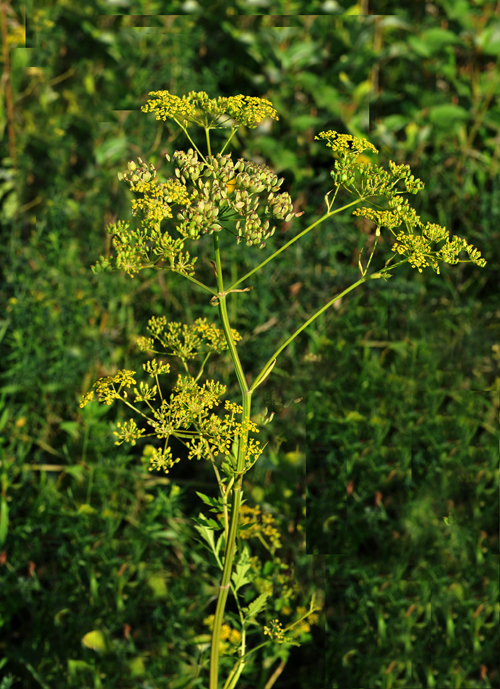Sustainable Development
- Trees
- Ecological Events
- Ecogestures
- Environmental Programs
- The unwanted...
- Environmental Publication
Wild parsnip
The wild parsnip or poison parsnip is an invasive plant of the same family as the giant hogweed. Upon contact with the skin, chemicals contained in sap react to the sunlight, causing redness or serious burns. It is therefore important to know how to recognize the wild parsnip to avoid contact with it.
Identifying the wild parsnip
- Grows up to 1.5 m tall
- The simple stem has a width of 2 to 5 centimetres, with few hairs and a soft surface
- The compound leaves are arranged in pairs, with sharply toothed leaflets that look like mittens
- Its yellowish-green flowers form umbrella-shaped clusters with a width of 10 to 20 centimetres
- The seeds are flat and round
What to do after contact with the plant?
- Wash the affected area with soap;
- Rince abundantly with clear water;
- Carefully wash your hands;
- Avoid contact to light from the affected area.
How to remove the wild parsnip?
It is important to protect all the parts of your body before beginning the removal of the wild parsnip, including covering your face and eyes. After the removal, clean the tools that were used as well as clothes and gloves, by turning them inside out.
The ideal moment to eliminate manually the wild parsnip is during spring, when the ground is humid. With the help of a round shovel or a spade, pull it out by removing as mush of the taproot as possible. It will then be essential to do a regular follow-up to avoid any regrowth.
To remove larger infestations (dense stands), you will likely need a professional.
For more information
For more information, contact the Green line:
- By phone: 514 630-2748
- By email: [email protected]


